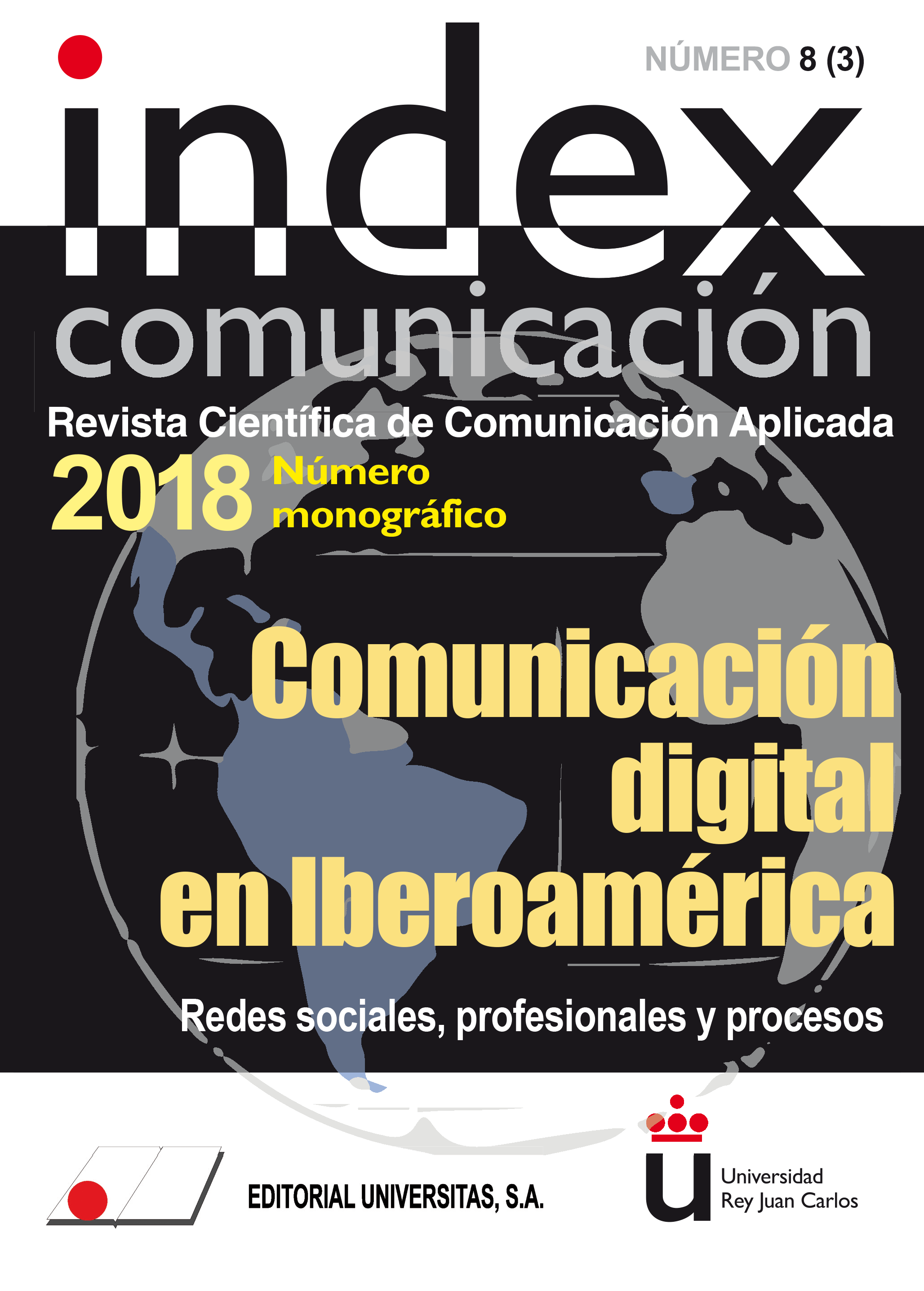Analysis of violent and hate speech in two Facebook groups against the candidacy of Rodrigo Londoño 'Timochenko' to the presidency of Colombia
Keywords:
Violent speech, hate speech, Colombian peace process, Facebook interaction,Abstract
The Peace Agreement signed between the Colombian Government and the Farc guerrilla in 2016 allowed this group, now as a political party, to nominate candidates in the parliamentary and presidential elections held in the first half of 2018. This has been strongly criticized by a group of Colombians, who have rejected it in physical and virtual spaces, to the point of forcing the new party to cease its campaign in public spaces. This article tries to reflect these reactions in two groups of Facebook, identify the communicative elements used in the interaction and analyze if there is a violent or hate speech, based on a digital ethnographic observation and content analysis. To this end, publications linked to the announcement of the candidacy for the presidency of Rodrigo Londoño 'Timochenko', to the presidency of Colombia, were reviewed in November 2017, which allowed identifying factors that favor the appearance of violent and hate speech, and the lack of interaction and use of communication tools of the digital environment in this type of message.
Metrics
References
Akerman, Y. (26 de marzo de 2016). El asociado N°. 82. Elespectador.com. Disponoble en: https://www.elespectador.com/opinion/opinion/el-asociado-no-82-columna-624024
Díaz Soto, J. M. (2015). Una aproximación al concepto de discurso del odio. Revista Derecho Del Estado, (34). Disponible en: http://www.redalyc.org/html/3376/337640285005/
El Tiempo (01 de agosto de 2018): Alerta por aumento de crímenes contra los desmovilizados de Farc. Eltiempo.com. Disponible en: https://www.eltiempo.com/justicia/investigacion/aumentan-los-asesinatos-de-desmovilizados-de-las-farc-250296
Hine, C. (2015). Ethnography for the Internet: Embedded, Embodied and Everyday. Londres: Bloomsbury Publishing.
Mintic. (2017). Estado del arte sobre violencia virtual en Colombia. Documento interno del Ministerio de las Tecnologías de Información y Comunicación de Colombia.
Misión de Observación Electoral. (2018). Más de 44 millones de conversaciones sobre proceso electoral se generaron en redes. Disponible en: https://moe.org.co/mas-de-44-millones-de-conversaciones-sobre-proceso-electoral-se-generaron-en-redes/
Miró Llinares, F. (2016). Taxonomía de la comunicación violenta y el discurso del odio en Internet. IDP. Revista de Internet, Derecho y Política, núm. 22, junio, 2016, pp. 82-107. Disponible en: http://www.redalyc.org/articulo.oa?id=78846481007
Molano Bravo, A. (2015). Fragmentos de la historia del conflicto armado (1920-2010). Informe creado como parte de la Comisión Histórica del Conflicto y sus Víctimas de la Mesa de Negociación entre el Gobierno Colombiano y las Farc- Ep. disponible en: http://www.altocomisionadoparalapaz.gov.co/mesadeconversaciones/PDF/fragmentos-de-la-historia-del-conflicto-armado-1920-2010-1447167631-1460380435.pdf
Palacios, M. (2012). Violencia pública en Colombia. Fondo de cultura Económica: Bogotá.
Pankowski, R. (2016). Comprender y luchar contra el “Discurso del Odio.” Disponible en: http://mcislamofobia.org/comprender-luchar-discurso-del-odio
Portafolio. (09 de mayo de 2017). Facebook tiene 17 millones de usuarios diarios en el país. Portafolio.com. Disponible en: http://www.portafolio.co/innovacion/facebook-tiene-17-millones-de-usuarios-diarios-en-el-pais-505713
Semana. (15 de mayo de 2015). ¿Por qué la Fiscalía levantó 118 órdenes de captura a ‘Timochenko’? Semana.com. Disponible en: http://www.semana.com/nacion/articulo/farc-fiscalia-levanta-118-ordenes-de-captura-timochenko/427696-3g
Trejo Delarbre, R. (2015). Intolerancia en línea. Entenderla, exhibirla, debatirla. En: Campos, M. Ramos, M. Trejo, R. Hernández, M. E. De Dios Corona, S. R. y otros. Mensajes de odio y discriminación en redes sociales. Consejo Nacional para prevenir la discriminación. Secretaría de Gobernación: México.
Verdadabierta.com (15 de septiembre de 2016). Exterminio de la UP fue un genocidio político. Verdad Abierta. Disponible en: http://www.verdadabierta.com/victimas-seccion/asesinatos-colectivos/4390-exterminio-de-la-up-si-fue-un-genocidio-politico
Published
How to Cite
Issue
Section
License
Authors who submit to this journal agree to the following terms:
Authors retain copyright and ensure the magazine's right to be the first publication of the work as licensed under a Creative Commons Attribution-NoComercial 4.0 International License that allows others to share the work with an acknowledgment of authorship of the work and the initial publication in this magazine, with no commercial purpose.
Authors can establish separate additional agreements for non-exclusive distribution of the version of the work published in the magazine (for example, to an institutional repository or publish it in a book), with an acknowledgment of its initial publication in this journal.
It allows and authors are encouraged to disseminate their work electronically (eg, in institutional repositories or on their own website) prior to and during the submission process, as it can lead to productive exchanges, as well as a citation more early and most of the published work (See The Effect of Open Access).















